LEOPARD PRINT: Decades of the Iconic and Controversial Print
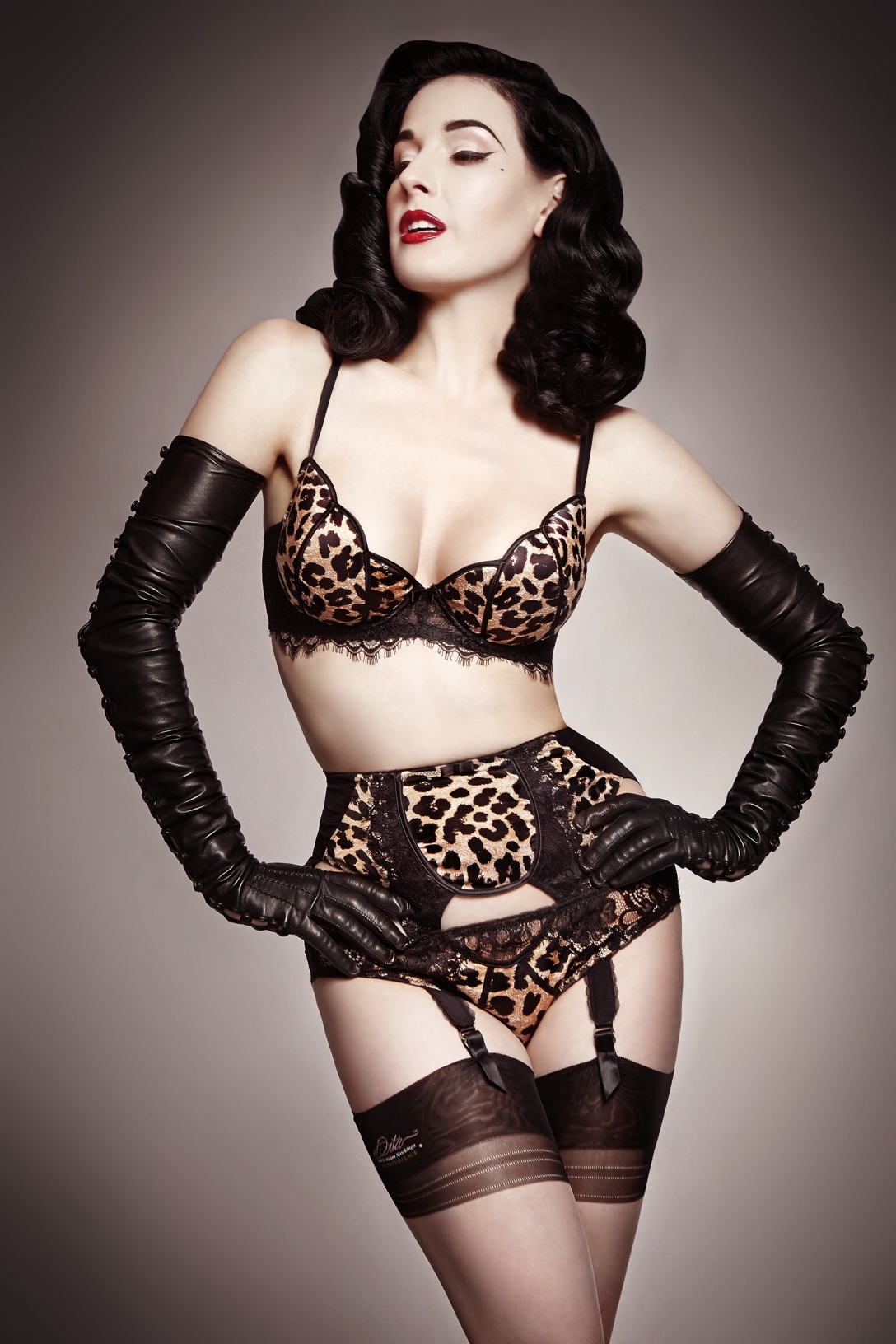
Image Credit Luxury Launches
Dita von Teese wearing Agent Provocateur leopard print
There’s a handful of classic textile surface patterns that will never go out of fashion: tartan, (with its Highlander and London punk connotations – a Vivienne Westwood and Yohji Yamamoto staple), paisley, that iconic ‘inverted comma’/ fertility symbol (that simultaneously conjures up images of ancient India and bohemian Morocco, worshipped by the likes of Liberty’s and Etro), nautical stripes (a la Coco Chanel and Jean-Paul Gaultier) and cheeky, cutesy polkadots, (synonymous with designer Carolina Herrera and artist Yayoi Kusama).
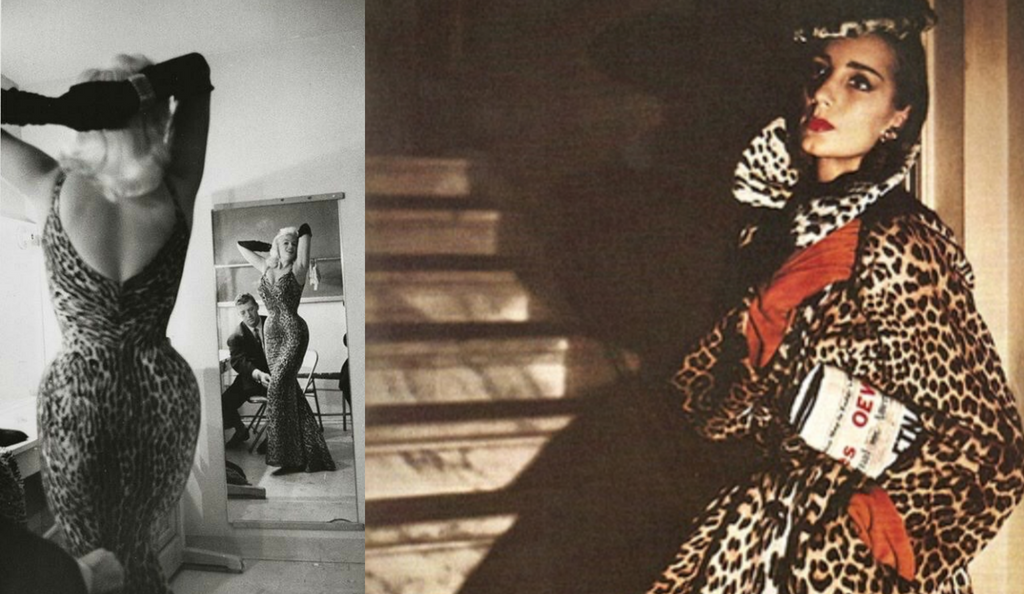
Image Credit Culture Whisper
The allure of the leopard spans over decades
And then there’s the VIP kingpin of all the prints: the inimitable leopard print. No other textile design evokes as much controversy than the print derived from this unmistakable, sleek and stealthy lone feline and its celebrated spots. The actual animal that inspires the print is one that we admire and fear at the same time, it is dangerous and yet irresistibly beautiful, it’s wild, it roams free and is known for its nocturnal activities. We inevitably make these connotations and associations subconsciously when we wear this exotic second skin.
Jo Weldon, who wrote a book called Fierce, The History of Leopard Print (2015), says, “Leopards are independent, they’re adaptable, they’re in every environment. They sleep in trees, they can swim in the water, they’re born to single moms.” No doubt all of this subliminally adds to our fascination with this exquisite spotty predator and the beguiling narrative its ‘camouflage’ provides us with.
As a design it has stood the test of time. It blends into our wardrobes effortlessly each season, just like the real McCoy melts into its natural habitat. Leopard print is perhaps not everybody’s taste (although this author firmly believes that even a whiff of leopard – a glove, hat or scarflet – will instantly glam up the most uninspiring of outfits before you can say ‘leopard’). Chic, versatile and glamorous, leopard prints have a lot to say about their wearer, they make a bold statement that implies sophistication, self-confidence, rebelliousness, sensuality and luxuriousness.
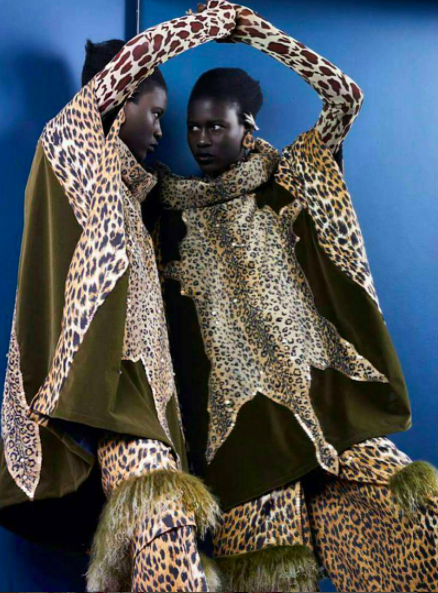
Image Credit Marianne Fassler on Instagram
South African designer Marianne Fassler is famous for her use of leopard prints in her range ‘Leopardfrock”
Going way back into history, wearing an animal print wasn’t only a sign of wealth and power, it also served to protect the wearer. No wonder kings and queens wanted to own leopard fur rugs to show off their superior status. These connotations soon translated into the world of fashion. Going back as far as the ancient Egyptians, their goddess of Wisdom, Seshat, was depicted in leopard skin outfits, so was the ancient Greek god of Wine, Dionysus who was often clad in leopard skin and seen riding on the back of a leopard in a chariot drawn by a pair of leopards. Likewise, Cybele, the plump Anatolian goddess (6th century BC), was often shown near leopards. In Europe leopard prints started to appear as textile designs on Italian and French clothing as early as the 18th century.
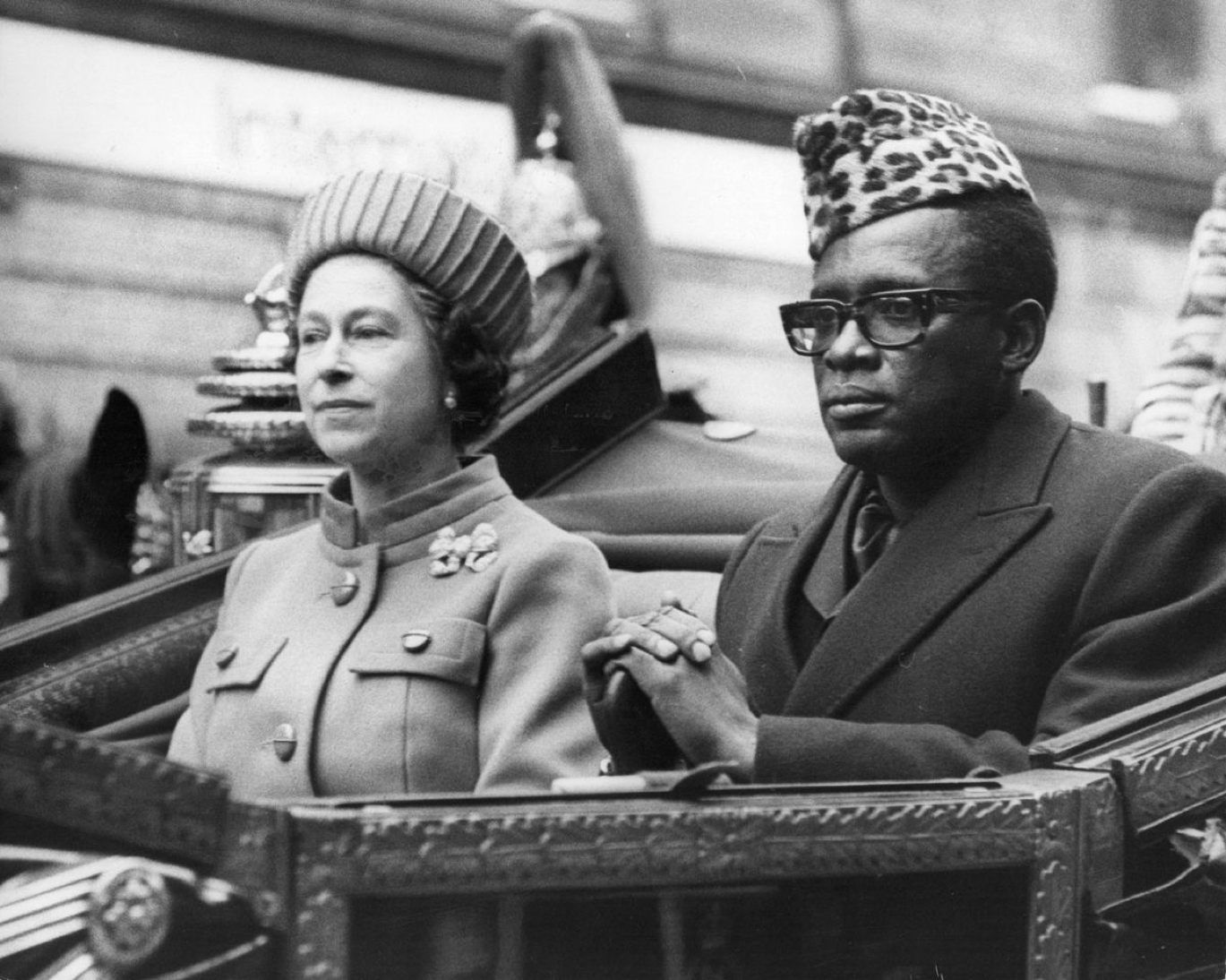
Image Credit Keystone/Getty Images
Zairean president Mobutu Sese Seko and Queen Elizabeth II
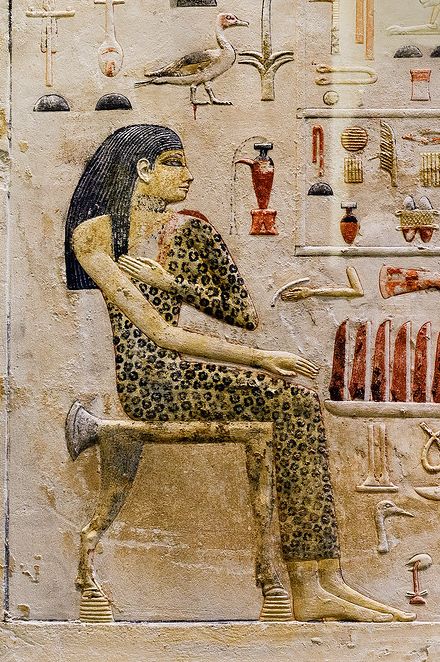
Image Credit CRF Fashion Book
The Egyptian princess Nefertiabe
Throughout the modern ages of fashion there have been very few designers who haven’t succumbed to dipping their toes into that instantly recognizable black, chocolate, ochre and beige leopard paint pot. The spot, with its organic, perfectly designed and universally pleasing shape has been spotted in Christian Dior’s (who famously warned, “If you are fair and sweet, don’t wear it!”) and Lanvin’s creations in the Twenties and Thirties. Incidentally, Christian Dior was the very first designer to put leopard print (not fur) on the catwalk in 1947.

Image Credit Printify.com
Twenties fashion
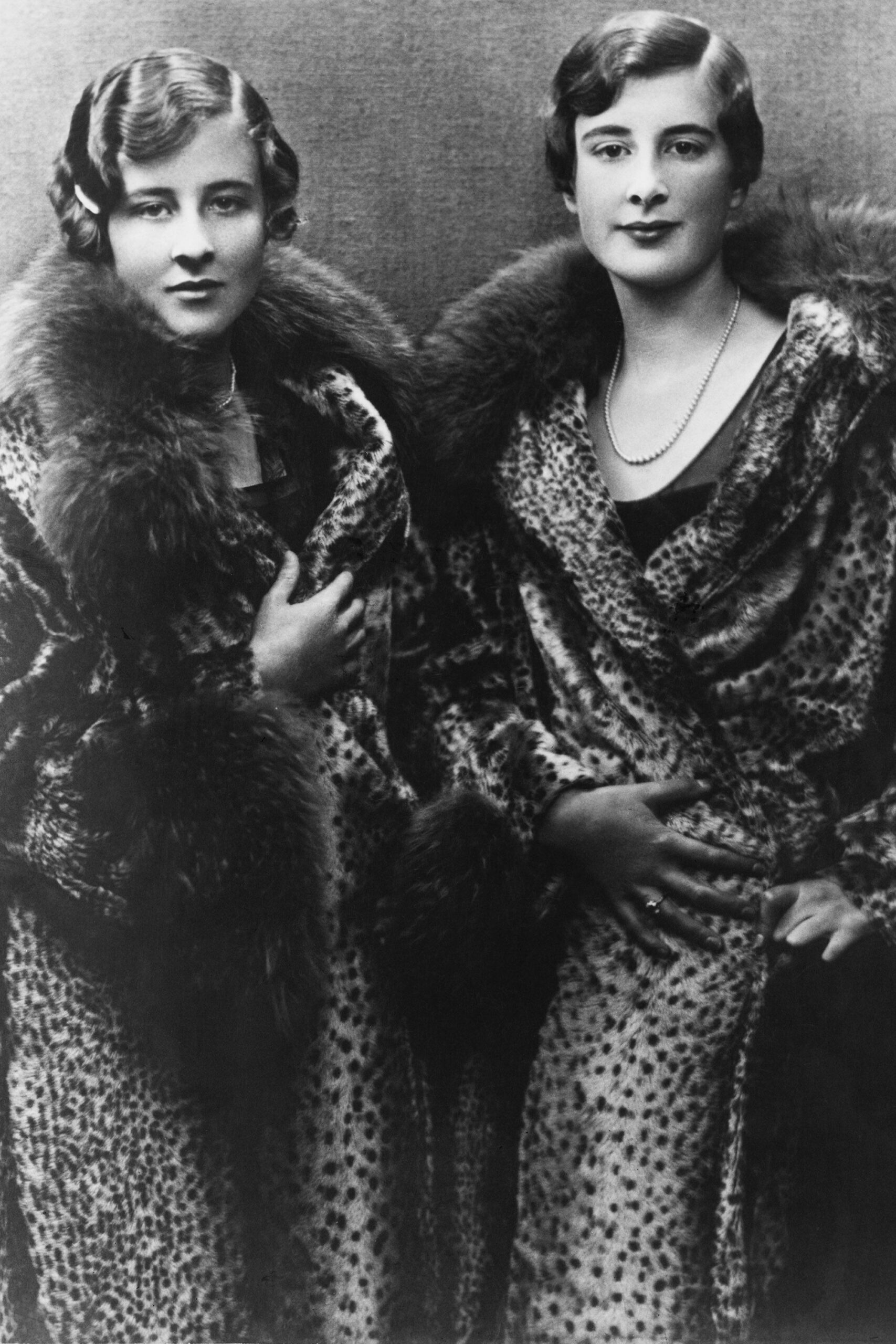
Image Credit Harper’s Bazaar.
Twenties beauties fully clad in leopard print
Real leopard skins would be worn by actresses, housewives and flappers throughout the Roaring Twenties and Dirty Thirties. Josephine Baker and Eartha Kitt very effectively pulled off the rather vampish look. The Tarzan films (Tarzan of the Apes, 1918) added to the mystique and gave the print an exotic and dangerous edge.
The sexy print came into its own in the Forties and Fifties when it became the design of choice for hourglass pin-up girl fashion like Betty Page’s. Vanity Fair, America’s famous lingerie brand, sold leopard print underwear and fur coats and soon the iconic pelt in coat form became the must-have piece of clothing in the Fifties. The allure of glam queen Marilyn Munroe sporting skintight dresses edged with leopard print only added to the sassy glamour of the already hyped print.
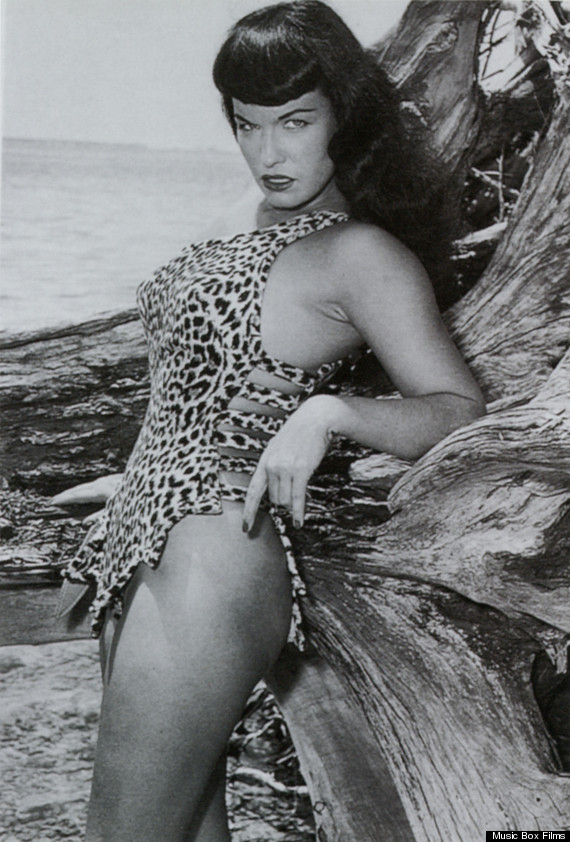
Image Credit Huffpost
Petty Page pin-up
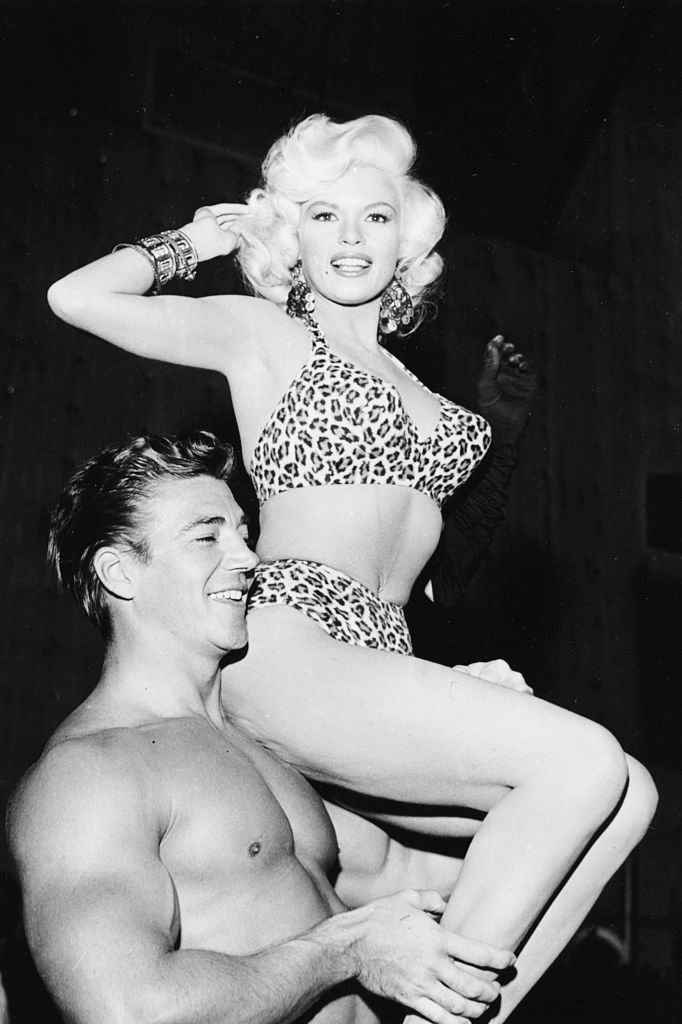
Image Credit CRF Fashion Book
Jayne Mansfield in a bullet bra leopard print bikini

Image Credit Reddit
Marilyn Monroe in a skintight hourglass dress edged with leopard fur
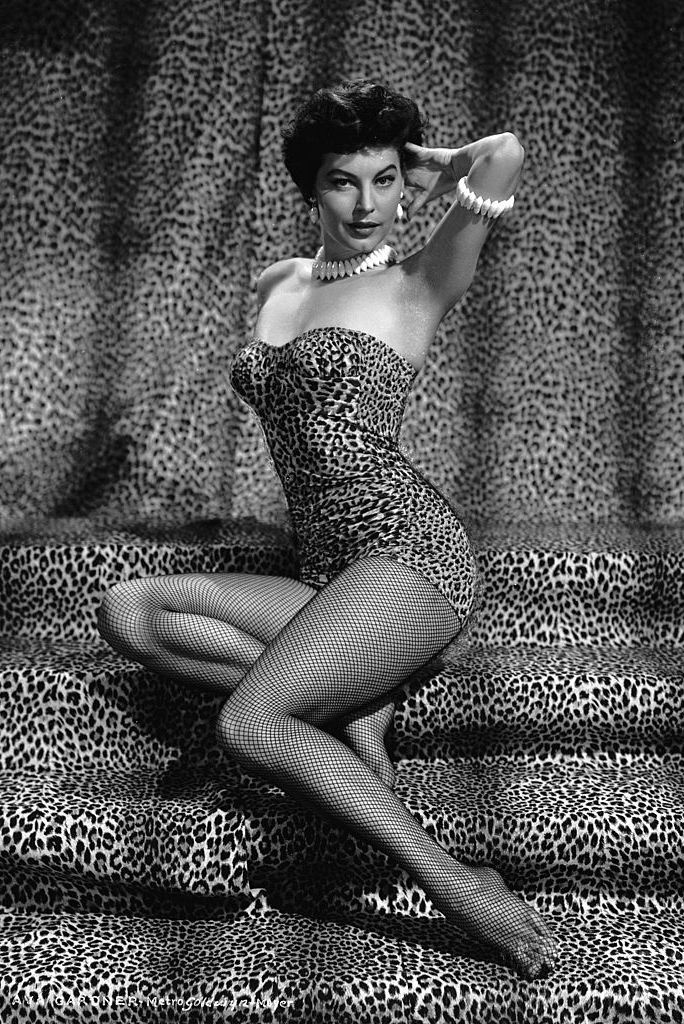
Image Credit CRF Fashion Book
The inimitable Ava Gardner
But it was in the Sixties that the irrepressible leopard print had its ultimate heyday. Associated with the spirit of the decade, leopard prints were seen as wild, open-minded and free-spirited. Sported by the purring and pouting Brigitte Bardot, A Star is Born singer and actress Barbara Streisand and sizzlingly hot, flavour-of-the-month Hollywood siren Elizabeth Taylor, leopard prints were a sign of feral sensuality and success, and represented ‘cats’ that needed handled with kitten gloves! Jackie Kennedy, Jean Shrimpton, Edie Sedgwick and Britt Ekland elevated the trend to another level while legendary Bob Dylan wrote songs like Leopard-Skin Pill-Box Hat in honour of the insatiable leopard phenomenon.
Towards the late 1960s the trade for real fur reached appalling heights when thousands of animals were slaughtered for their fur and on ethical grounds dozens of designers forthwith started to turn to faux fur for fueling the growing demand for the matchless leopard print.
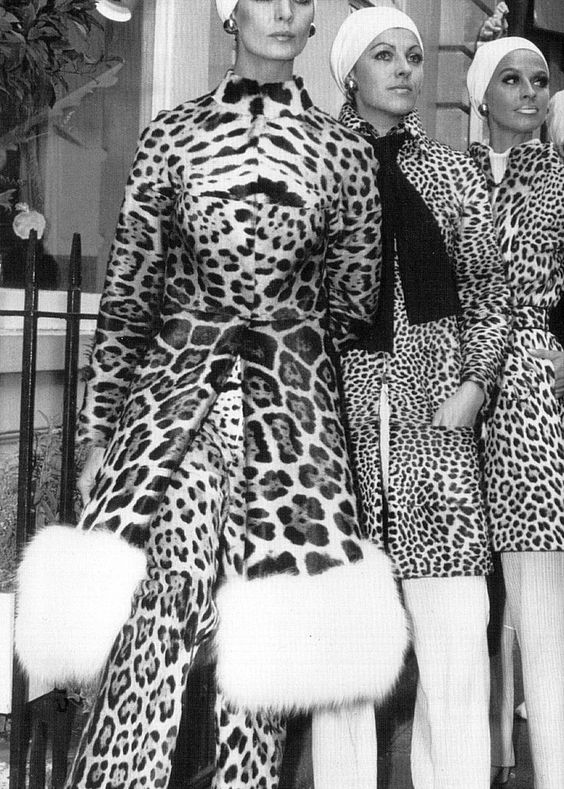
Image Credit Pinterest
Sixties fashion
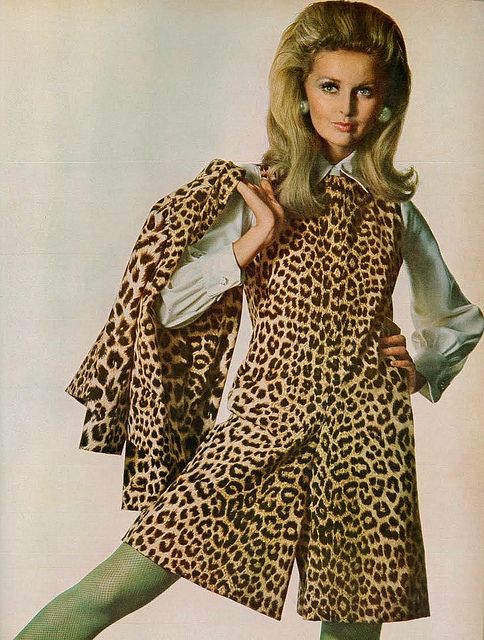
Image Credit Dovima is Divine II on flickr
Photo of Samantha Jones by Irving Penn, 1966
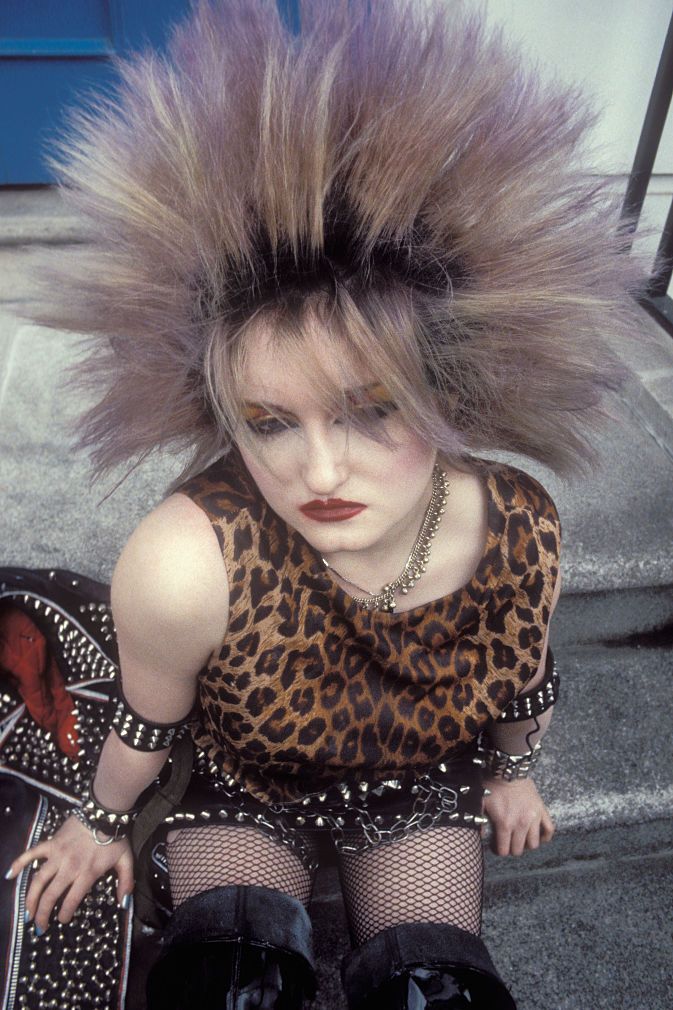
Image Credit CRF Fashion Book
British punks
The late Seventies and early Eighties saw Punk and Sid Vicious rubbishing the establishment in torn leopard print and tartan, sex kitten Debbie Harry meowed into her microphone and Diane von Furstenburg designed her now-famous wrap-over dresses in leopard print. In the Nineties Versace’s emblematic and striking textile designs combined gilt, Greek artwork, architectural elements, the Medusa and leopard print – a heady, regal and glamorous concoction that spelled sexy with a capital ‘S’. Body-con dresses by designers like Azzedine Alaia properly propelled sexiness into the fashion arena with the use of lycra, spandex, leopard-print leather and PVC. Joan Crawford was perhaps the embodiment of the sensual print in this era.

Image Credit Tim Boxer/Hulton Archive/Getty Images
Diane Von Furstenburg (center) in a leopard-print wrap dress, with Andy Warhol (left) and Monique Van Vooren (right)
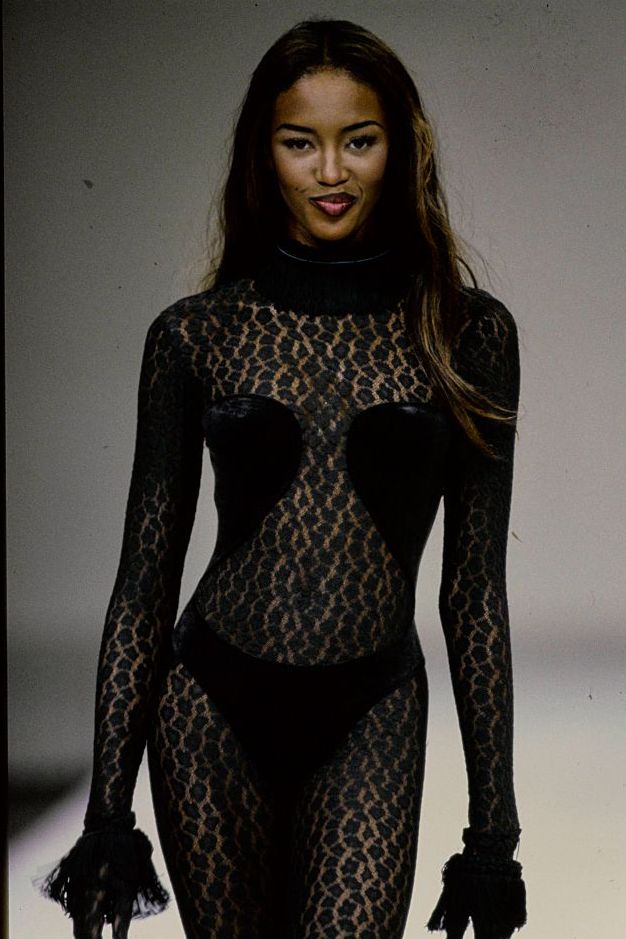
Image Credit CRF Fashion Book
Alaia’s bodycon ensemble on Naomi Campbell, 1990s
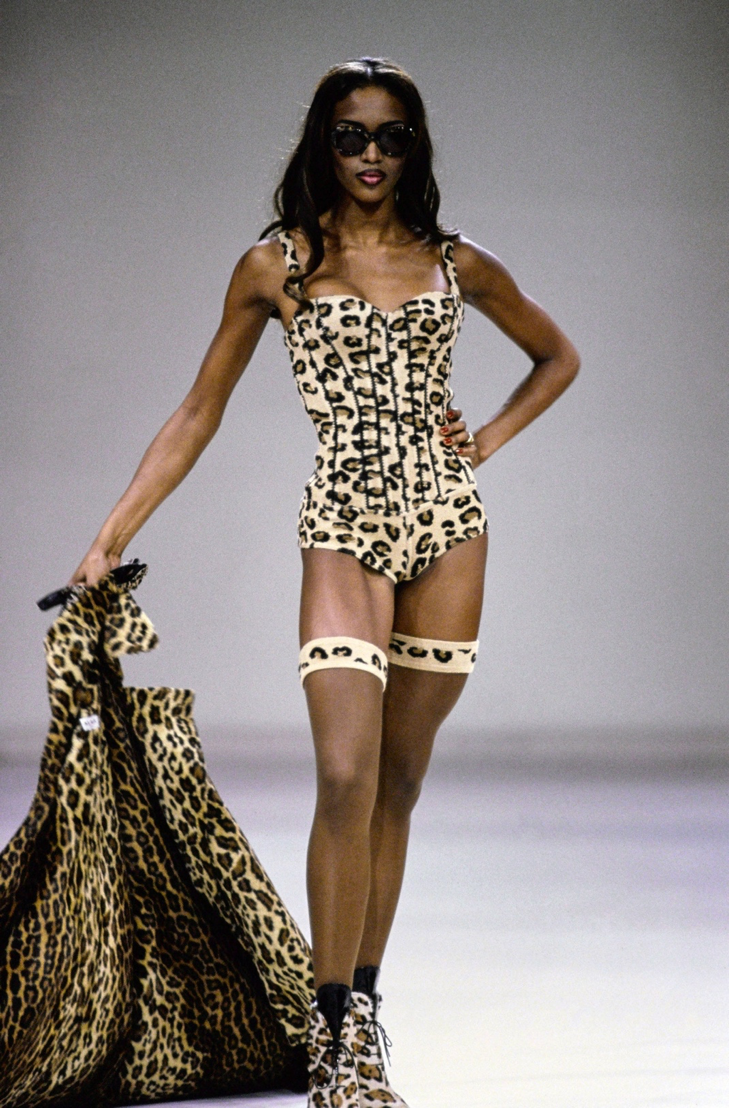
Image Credit Vogue
Naomi Campbell, Azzedine Alaïa autumn/winter 1991
In the Nineties supermodels Cindy Crawford, Naomi Campbell, Christy Turlington and Linda Evangelista strutted their stuff on the catwalk in sizzling hot leopard outfits in an era of the fiercest, most outrageous and most memorable of fashion, unlikely ever to be repeated! Key players like Dolce & Gabbana, Christian Lacroix and Yves St Laurent ensured there were copious quantities of the beloved spot in their offerings. It may well be the young Kate Moss who forever immortalized the leopard print in her love-affair with that instantly glamorizing of tricks, the leopard print coat.
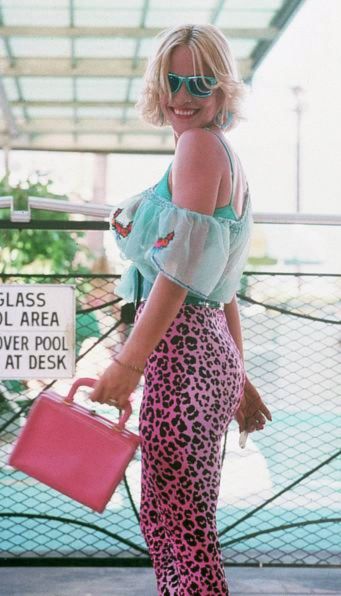
Image Credit Seren Megan on Pinterest
Patricia Arquette in True Romance
The 2000s onwards have seen the trend in a continual loop of leopard print being part of most seasons’ fashion weeks and designers’ offerings. Never far from the drawing board, catwalk or high street, this is a fashion trend that has outlived all others, and in incomparable style. From Prada to Miu Miu, Givenchy to Valentino, Victoria Beckham to Moschino, designers keep paying homage to this trend with its seeming life of infinite longevity. Roberto Cavalli built his brand around animal prints, and in particular leopard print.
An endless list of celebrities favour the look – from Courtney Love to Madonna, Sarah Jessica Parker and Beyonce to a mature Kate Moss, Rihanna and Kim Kardashian. The leopard keeps inspiring its wearers and keeps coralling more and more loyal admirers! In fact, the list of powerful women adoring the look and wearing it with confidence and elegance is endless: The Spice Girls, Lil Kim and Michelle Obama all covet this, the most covetable of all forever-on-trend looks. Iggy Pop’s tribute to the phenomenal fashion trend in I felt the Luxury, says it all,
“She sat on the pavement
As I pulled in the drive
Wearing leopard skin velvet
And shiny black eyes….”

Image Credit Pinterest
Michelle Obama in a sequin leopard-print cardigan.
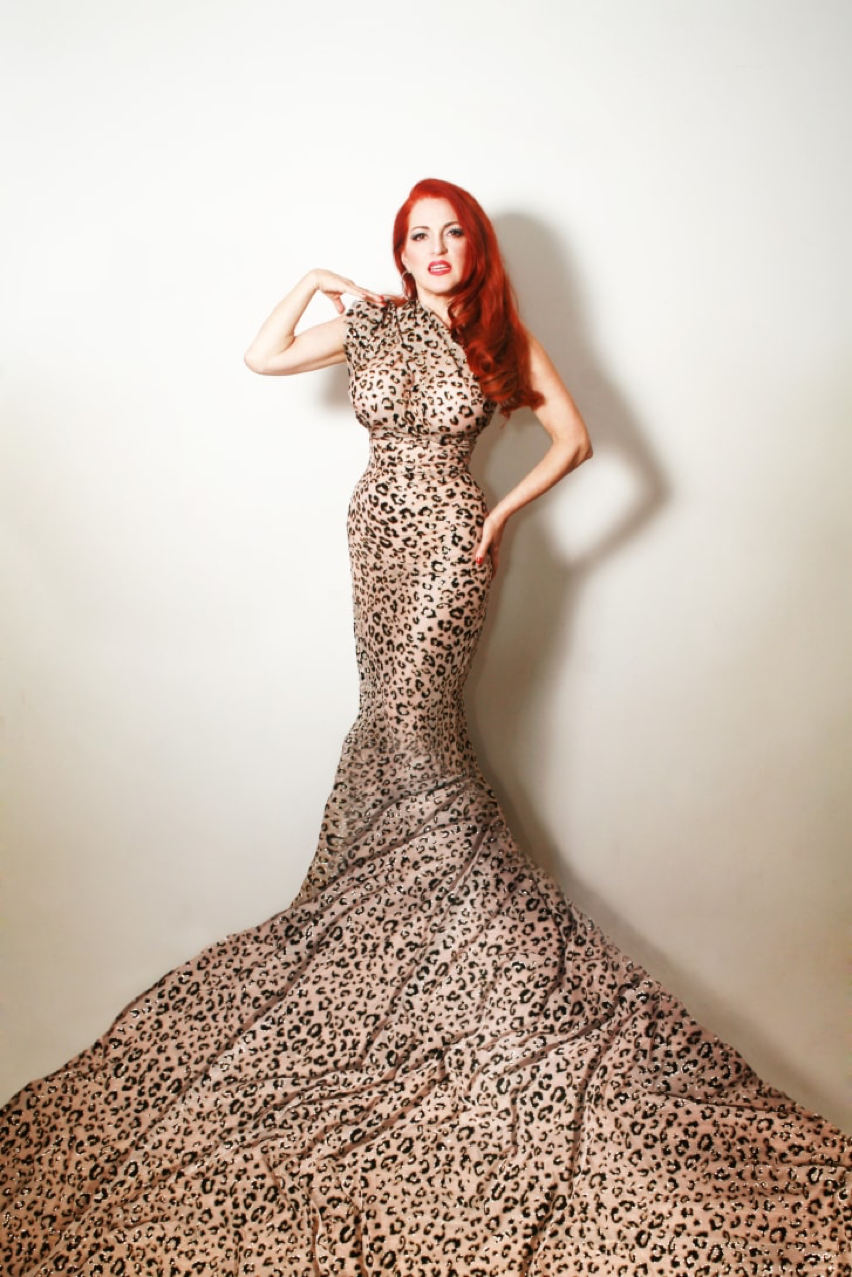
Image Credit Bettina May
Jo Weldon is a burlesque dancer who has spent the past three years researching the history of leopard print for her book Fierce: The History of Leopard Print (2015)
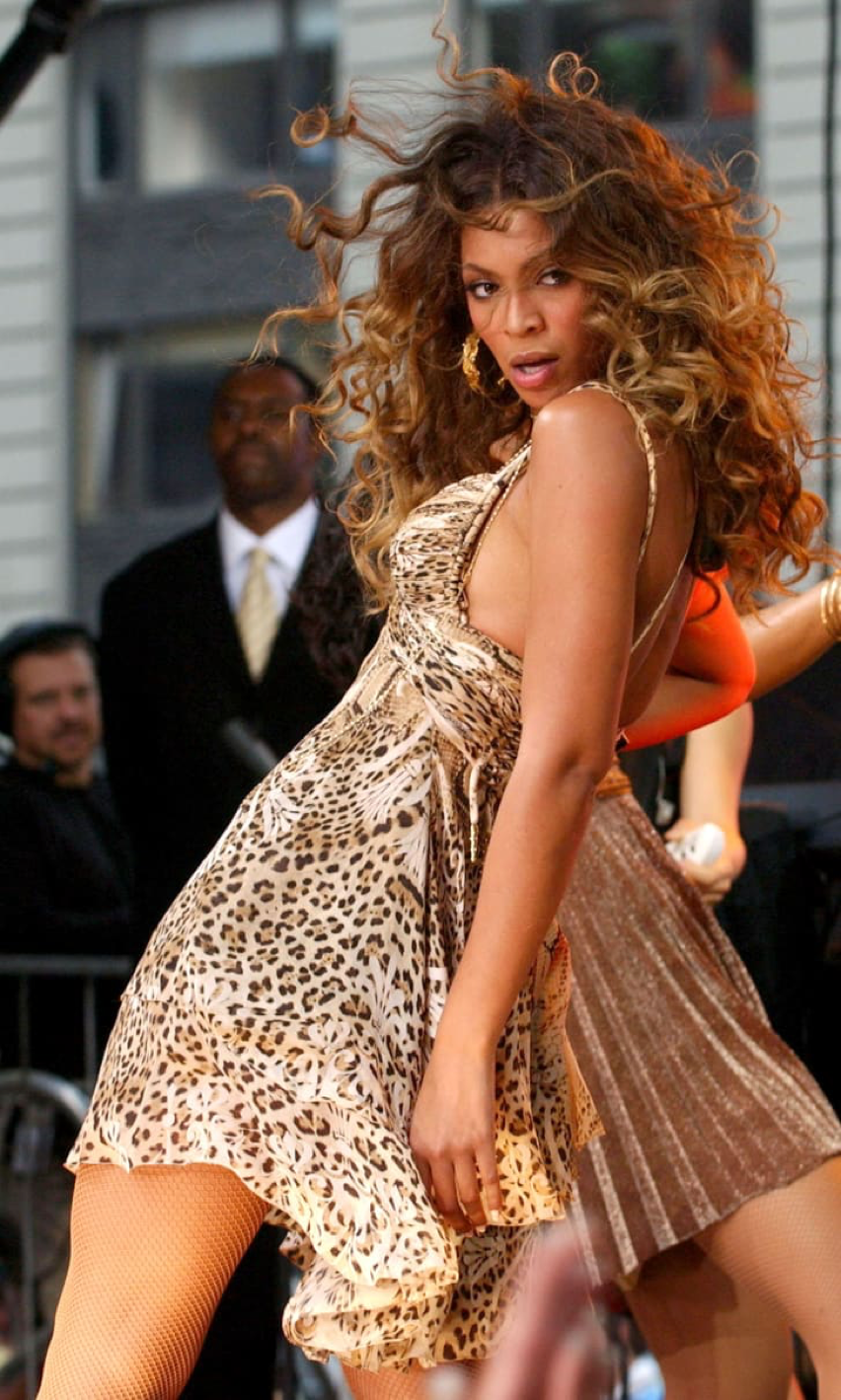
Credit: Courtesy Everett Collection
Beyonce wearing a leopard dress, performs for ABC Good Morning in Times Square, New York in 2006
African designers (no surprises there, as Africa is home to the real beast) also covet the spotty design and it is always one of their go-to fashion choices. World-renown South African designer Marianne Fassler’s iconic label Leopard Frock has, over the past fifty years featured leopard print in one of its many guises in most of her collections. British TV personality, make-up entrepreneur and What-Not-To-Wear guru, Trinny Woodall, swears by the transformative powers of the leopard spot as one of the instant pick-me-ups in our wardrobes.
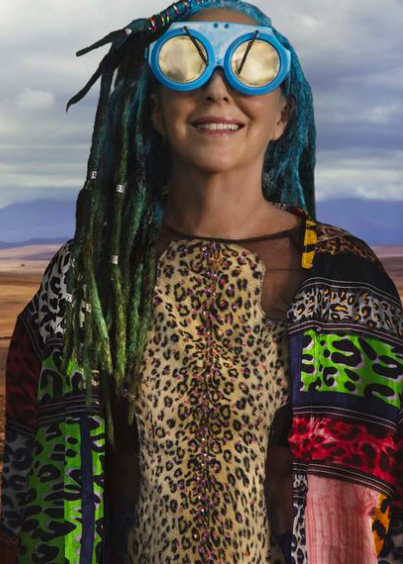
Image Credit Marianne Fassler on Instagram
South African designer Marianne Fassler is famous for her use of leopard prints in her range ‘Leopard Frock’. This is the designer herself sporting her famous prints
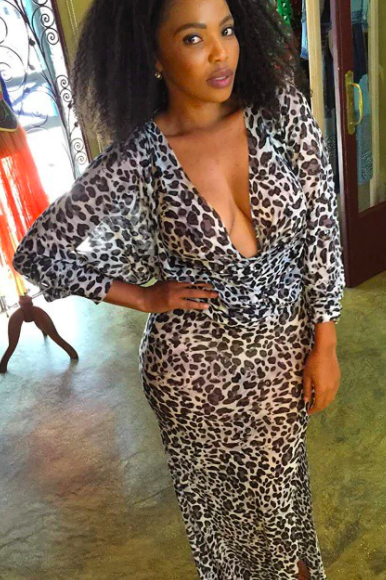
Image Credit Marianne Fassler on Instagram
South African designer Marianne Fassler is famous for her use of leopard prints in her range ‘Leopard Frock’. A sleek maxi dress
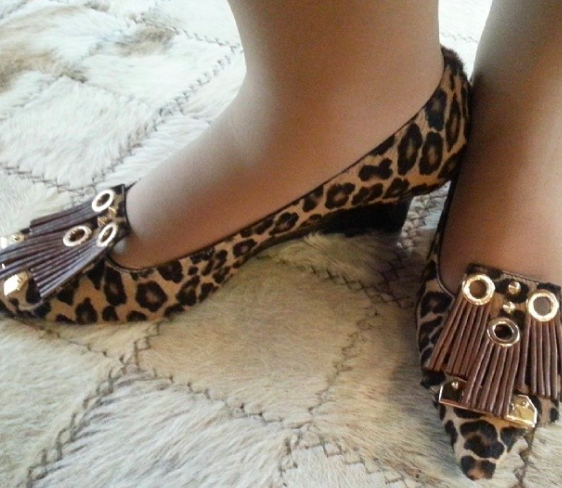
Image Credit Marianne Fassler on Instagram
South African designer Marianne Fassler is famous for her use of leopard prints in her range ‘Leopard Frock. Leopard print shoes are a fashion staple
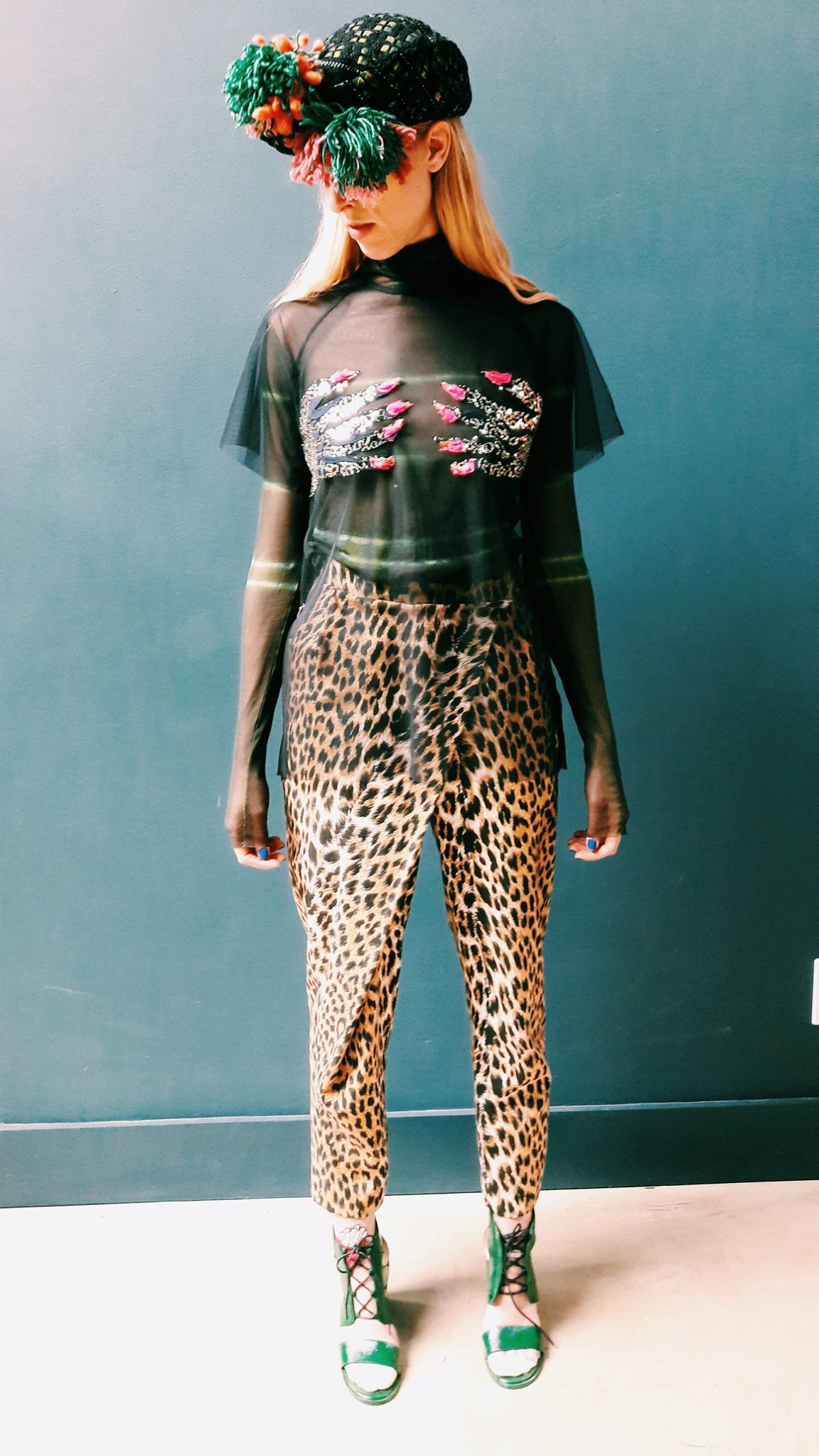
Image Credit Marianne Fassler on Instagram
South African designer Marianne Fassler is famous for her use of leopard prints in her range ‘Leopard Frock’. An eclectic ensemble, with leopard print taking centre stage
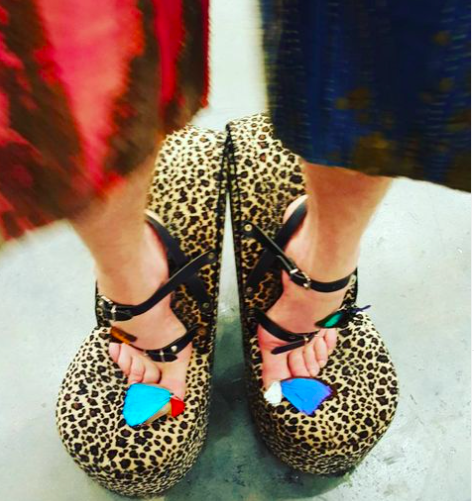
Image Credit Marianne Fassler on Instagram
South African designer Marianne Fassler is famous for her use of leopard prints in her range ‘Leopard Frock. Simply can’t get enough of those spots!

Image Credit Marianne Fassler on Instagram
South African designer Marianne Fassler is famous for her use of leopard prints in her range ‘Leopard Frock’. Lavender hued stretch leggings in leopard print
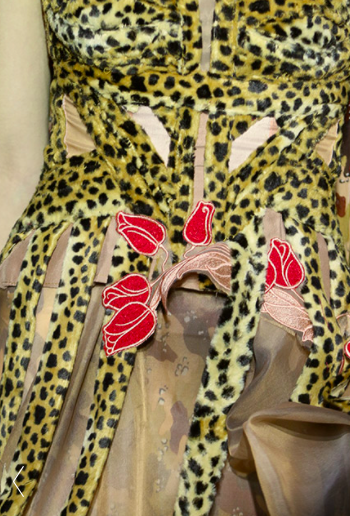
Image Credit Marianne Fassler on Instagram
South African designer Marianne Fassler is famous for her use of leopard prints in her range ‘Leopardfrock”. Detail on a wedding dress
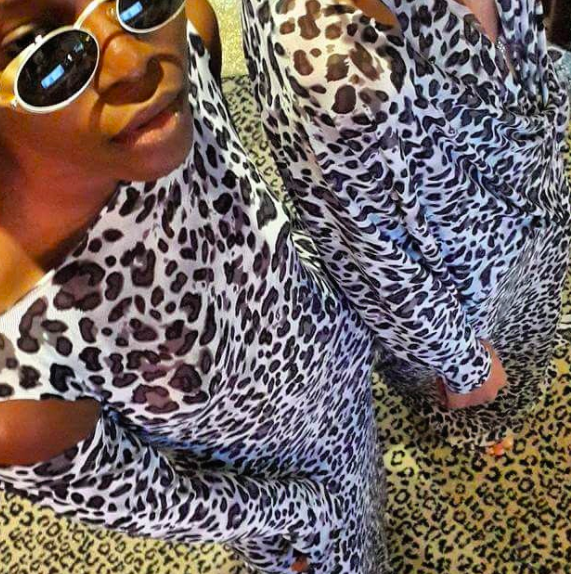
Image Credit Marianne Fassler on Instagram
South African designer Marianne Fassler is famous for her use of leopard prints in her range ‘Leopard Frock’. A black and white version of the famous spots
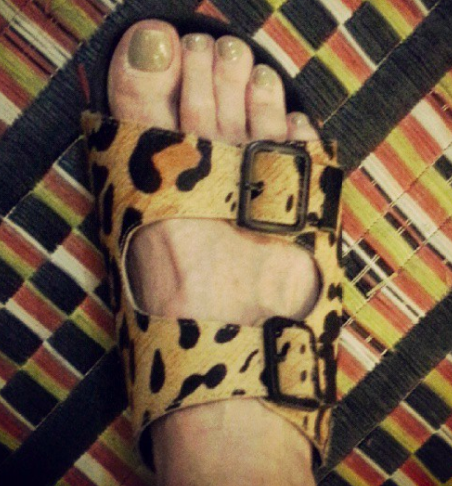
Image Credit Marianne Fassler on Instagram
South African designer Marianne Fassler is famous for her use of leopard prints in her range ‘Leopard Frock’. Comfu leopard print sandals
In 2021’s fashion weeks many designers put leopard print right in the centre of their collections, most notably so Roberto Cavalli, Proenza Schouler, Tom Ford and Christian Dior.

Image Credit Vogue
Roberto Cavalli 2021
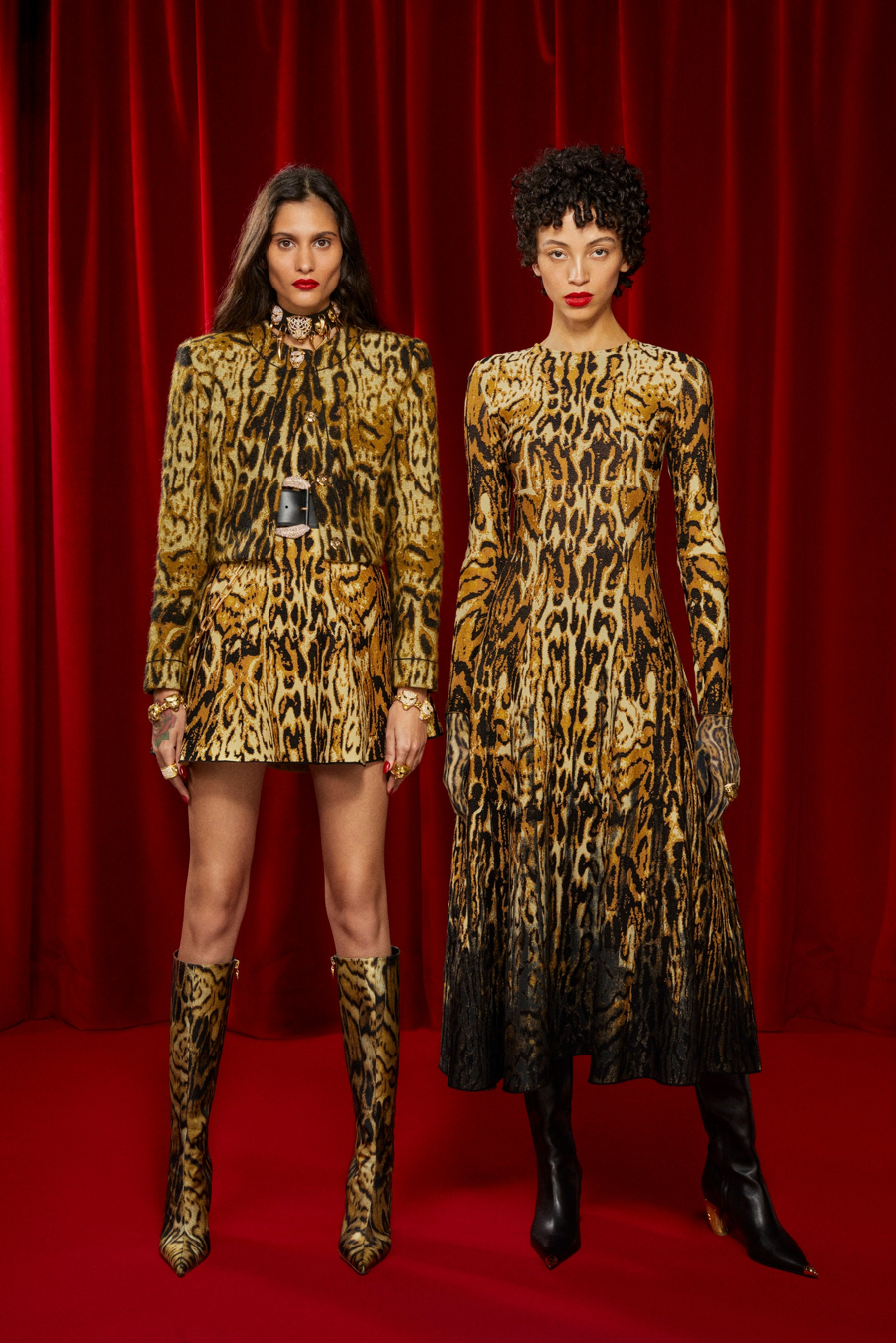
Image Credit Vogue
Roberto Cavalli 2021
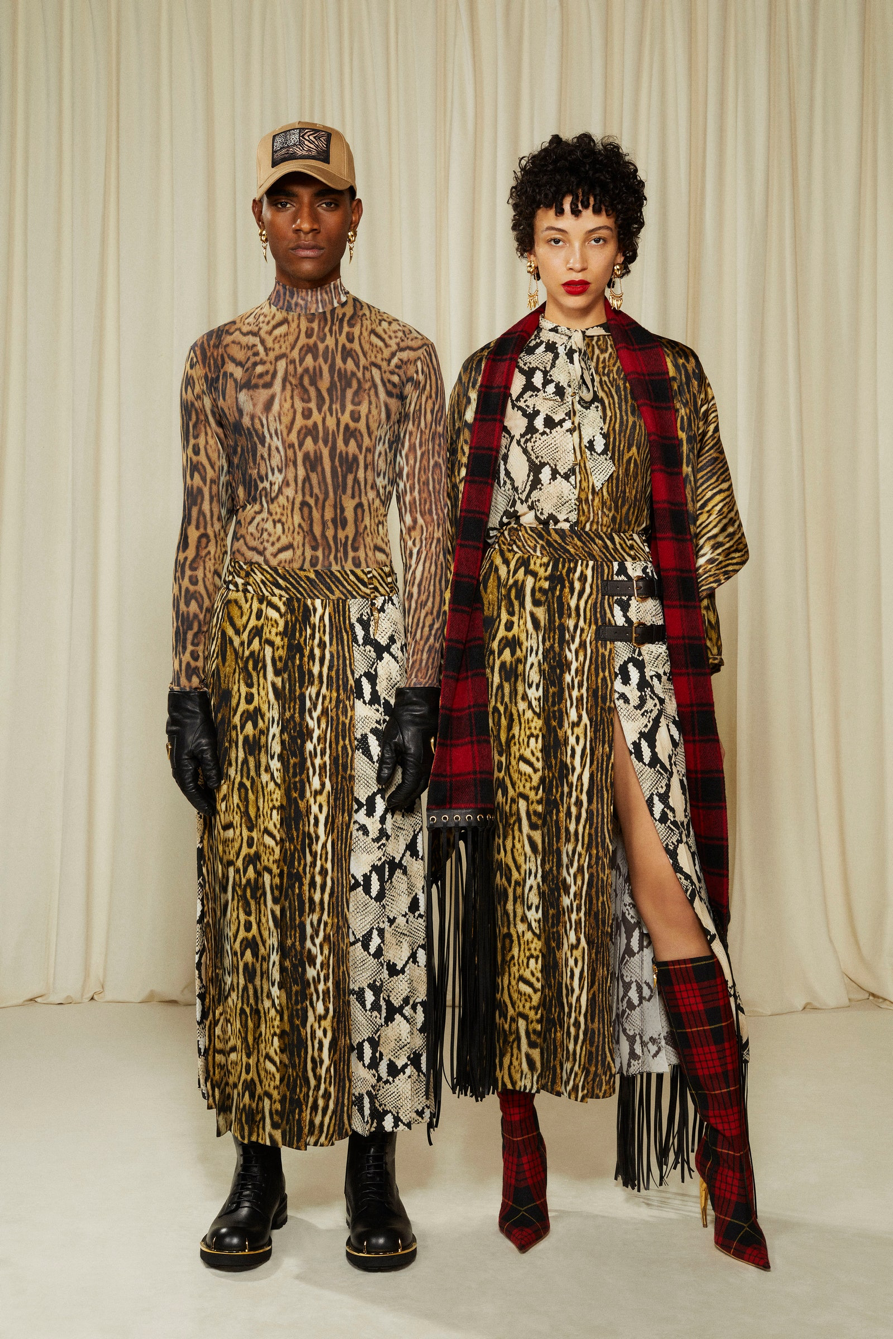
Image Credit Vogue
Roberto Cavalli 2021
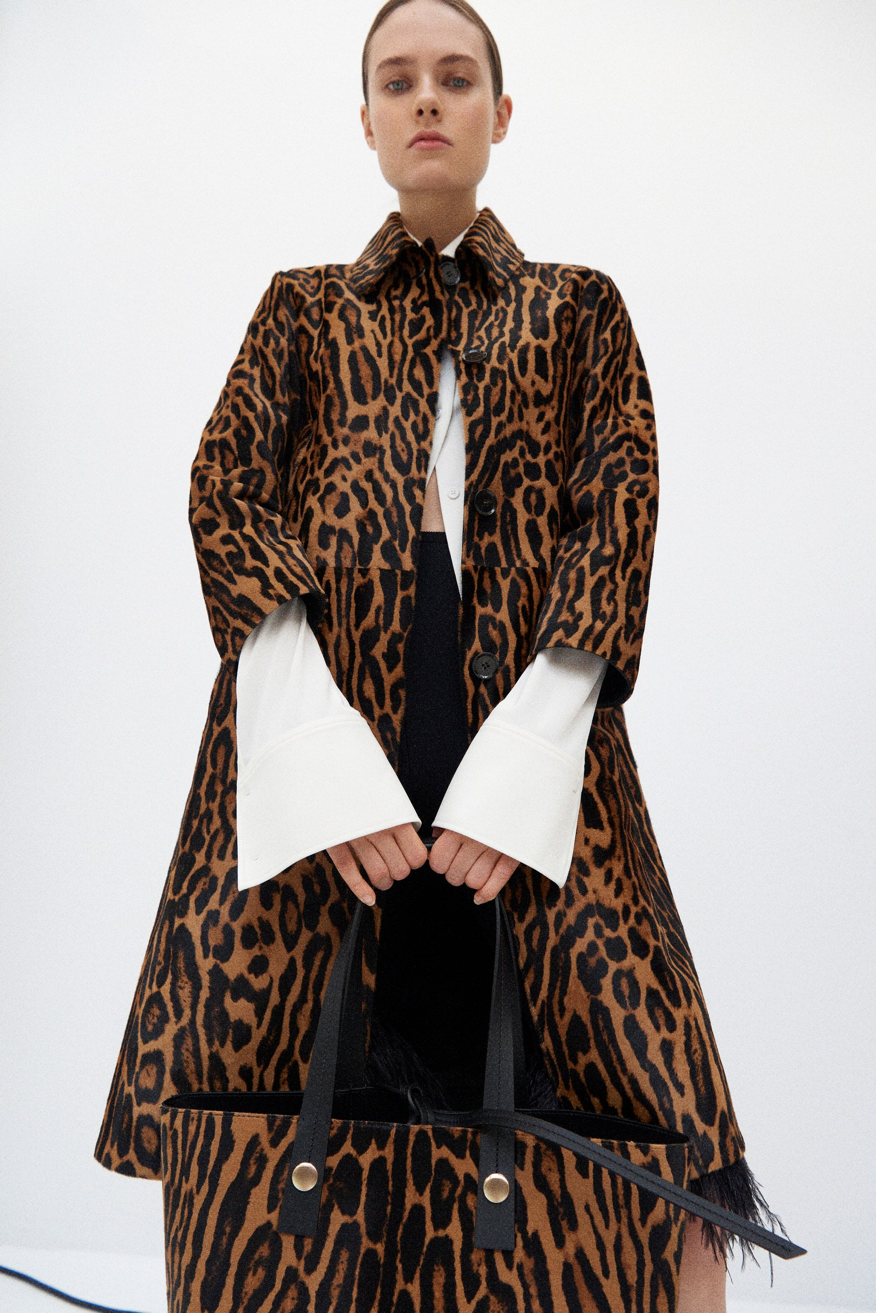
Image Credit Vogue
Proenza Shouler 2021
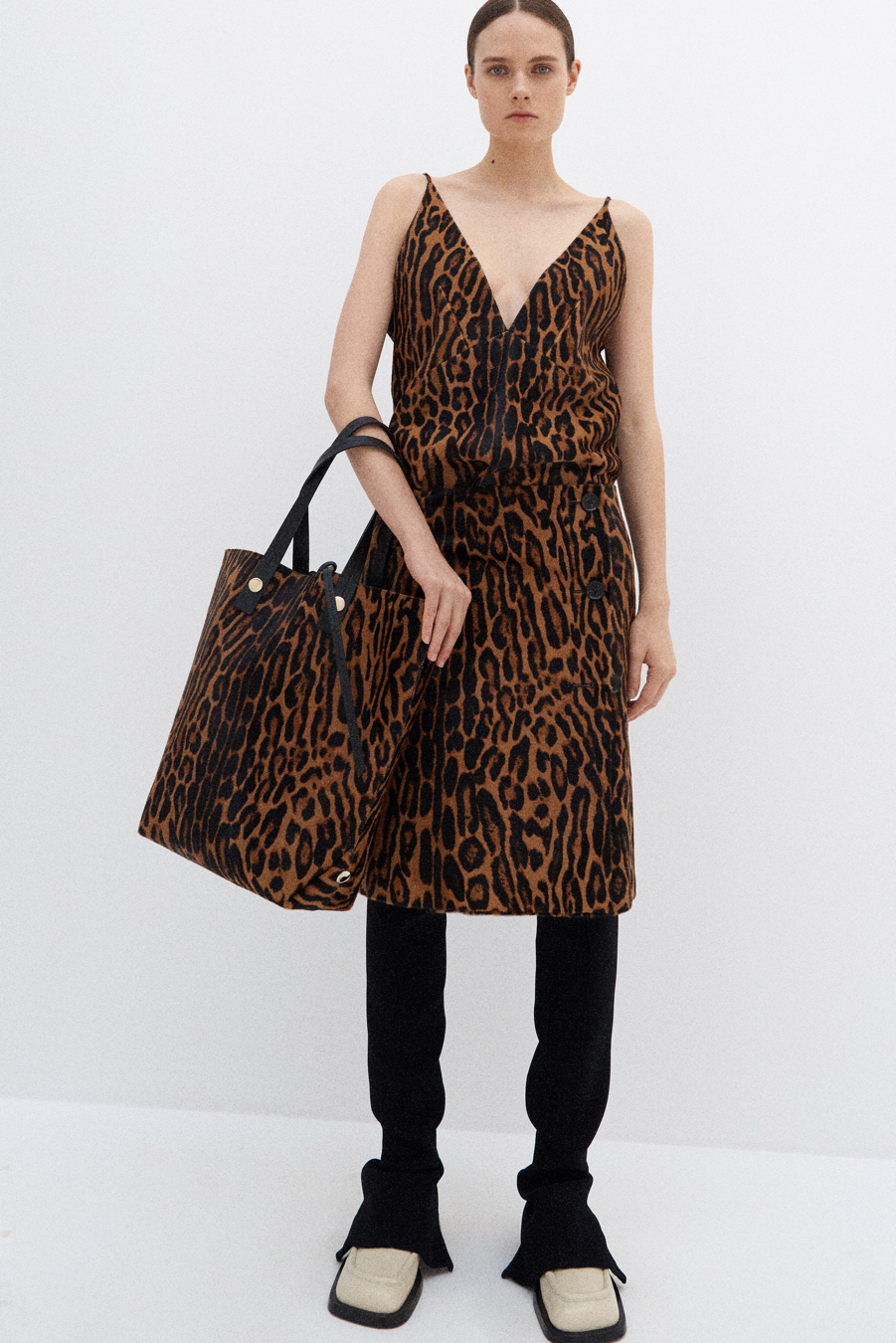
Image Credit Vogue
Proenza Shouler 2021
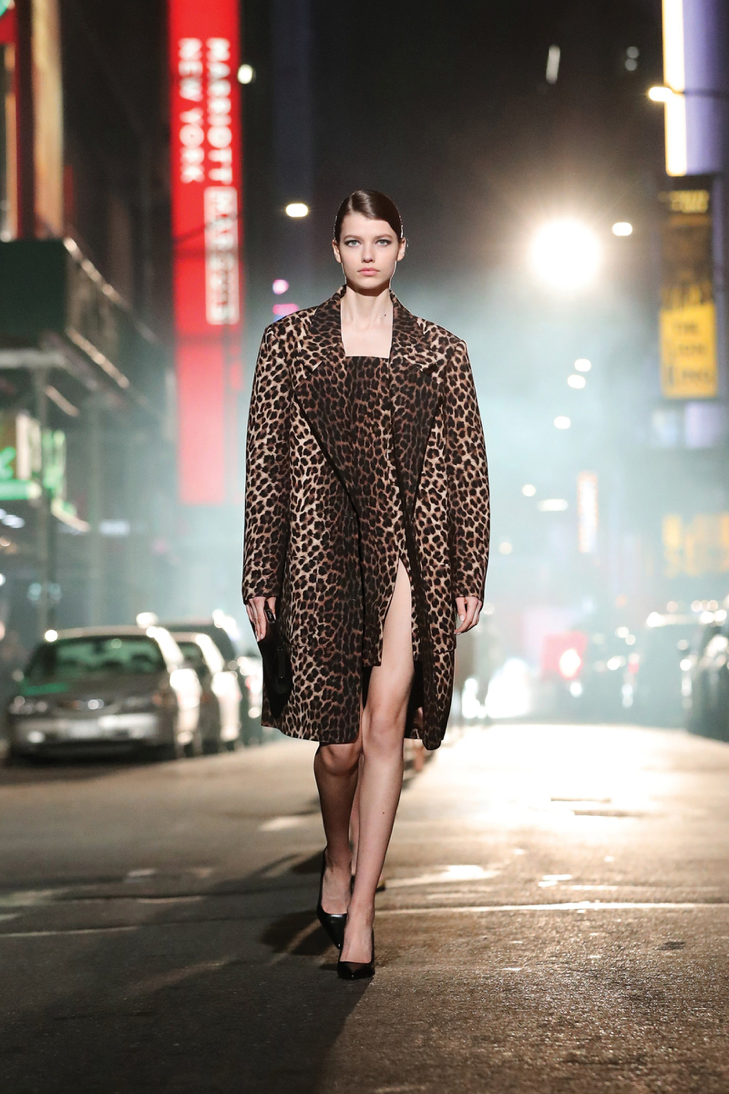
Image Credit Vogue
Tom Ford 2021
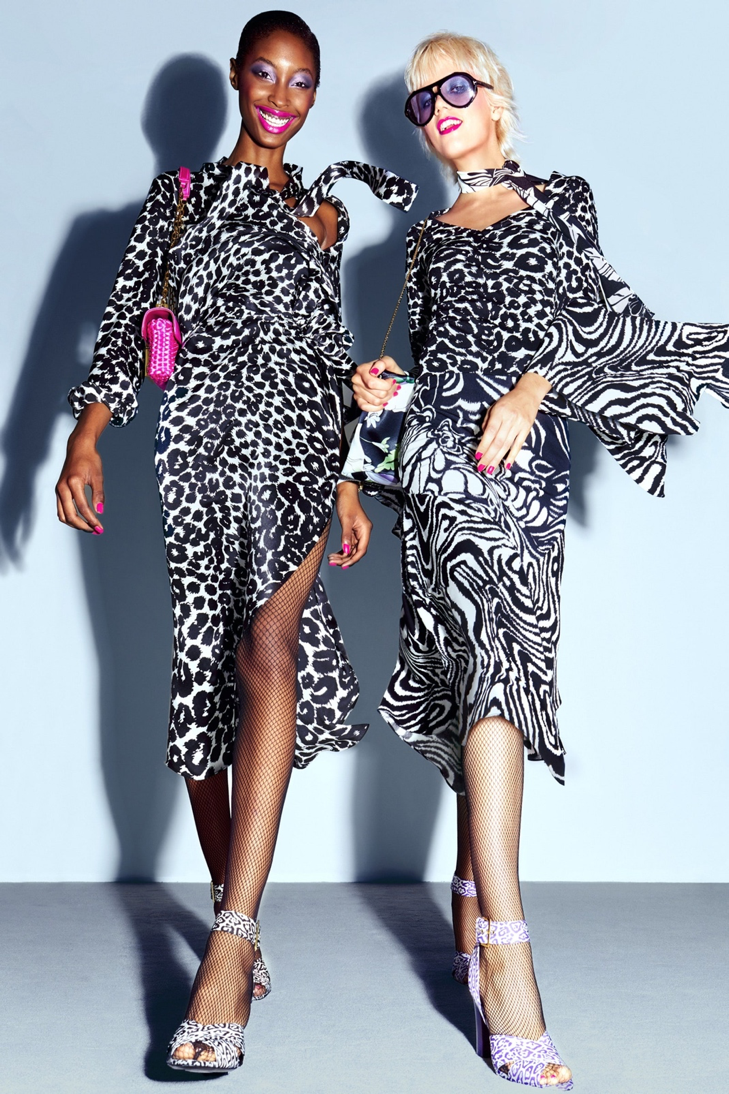
Image Credit Vogue
Tom Ford 2021
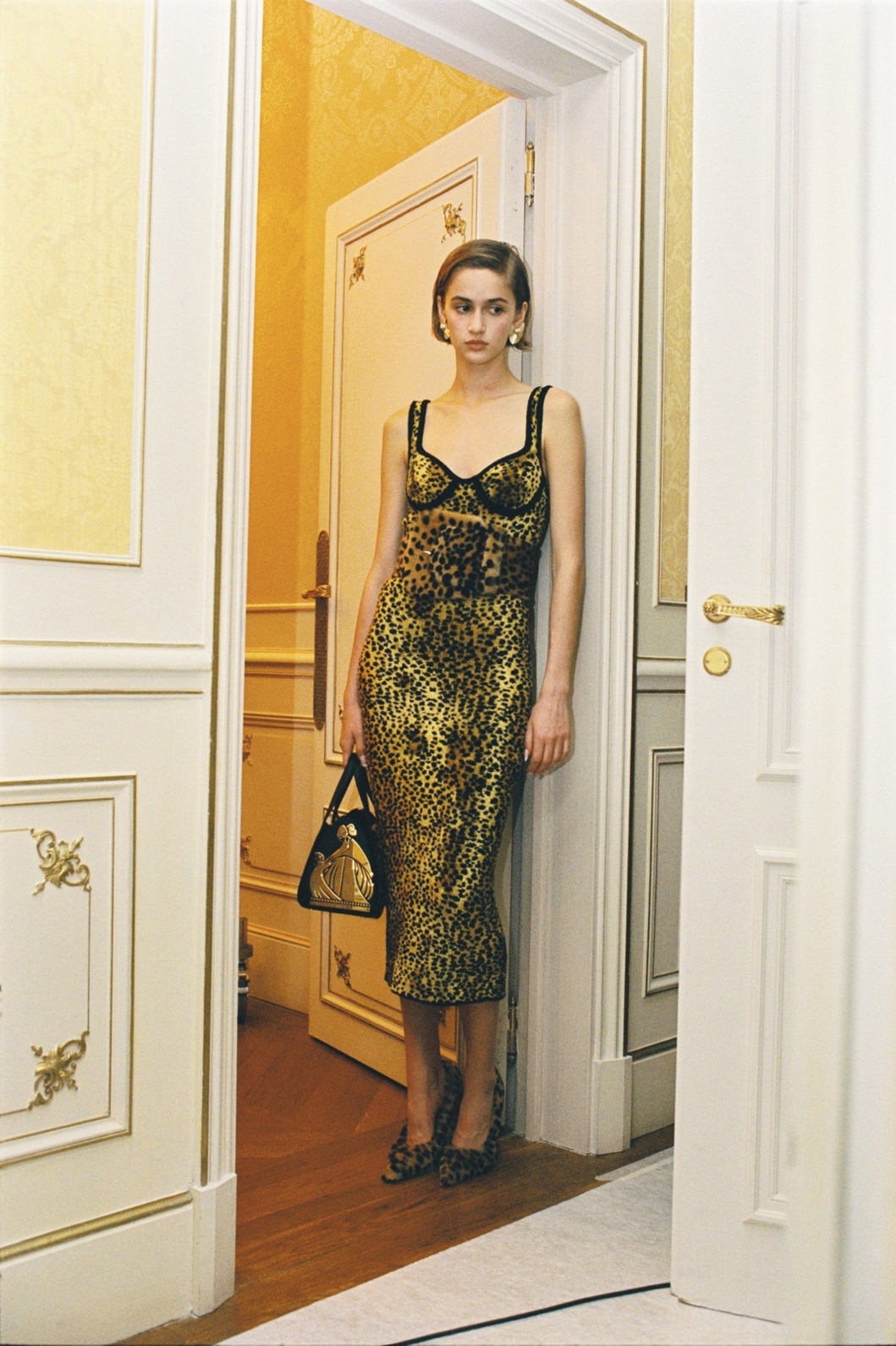
Image Credit Lanvin
Lanvin autumn/winter 2021
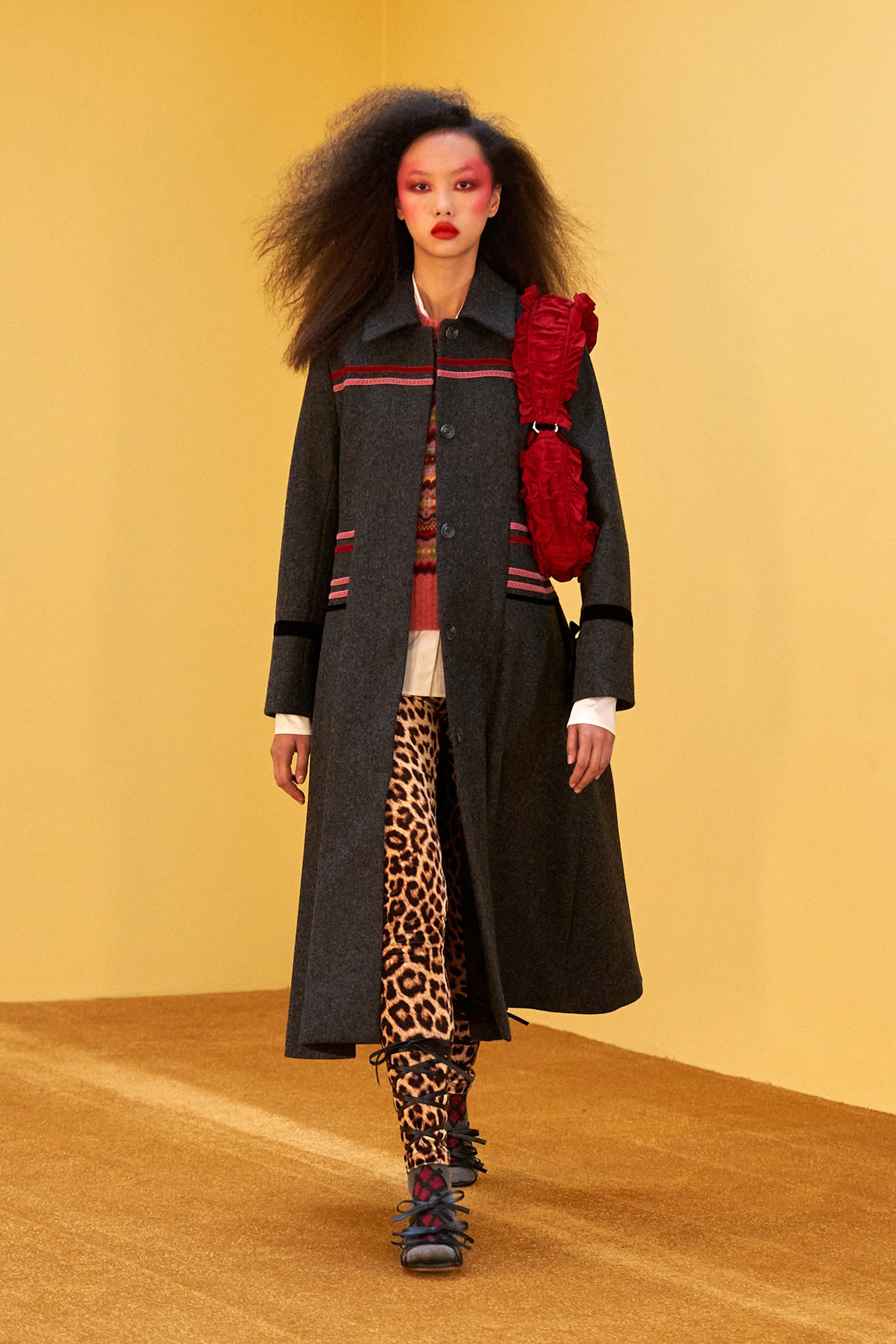
Image Credit Vogue
Molly Goddard autumn/winter 2021.
It’s unlikely our infatuation with the fabulous beast and its feline prowess will ever cease. Leopard print will forever (after all, a leopard doesn’t change its spots…) be the go-to garment and accessory for the confident, independent and non-conformist. It’s genderless and ageless, it’s an instant glamorizer, it works with every skin tone, it’s perfect for every occasion, it works with just about every colour palette. Furthermore, it comes in every colour under the sun and its designs vary from gigantic to miniscule. It lets us escape our often uninspiring office lives by the simple addition of a leopard print hat of scarf.
To boot, whether you’re stalking or pouncing, you and your leopard friends are guaranteed to turn heads wherever you go. Now, which other textile design can possibly do all of that for you?
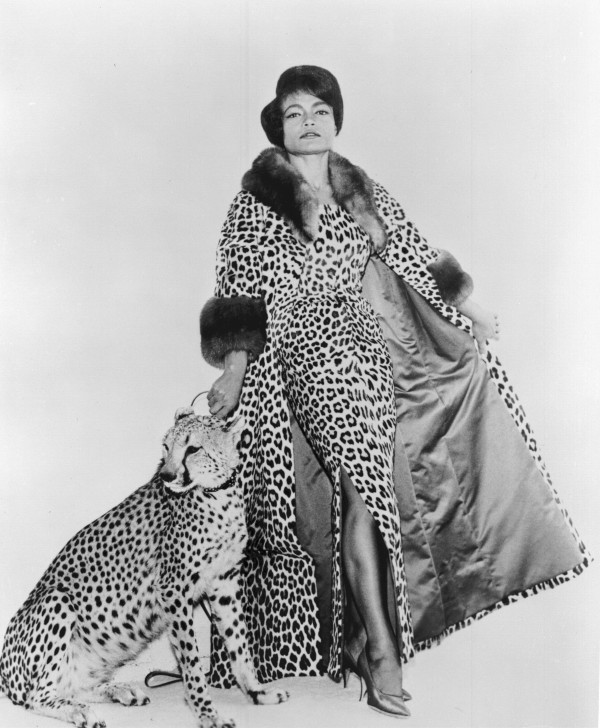
Image Credit Racked
The legendary Eartha kit and a very close cousin of the legendary beast that inspires the most iconic of all textile prints




